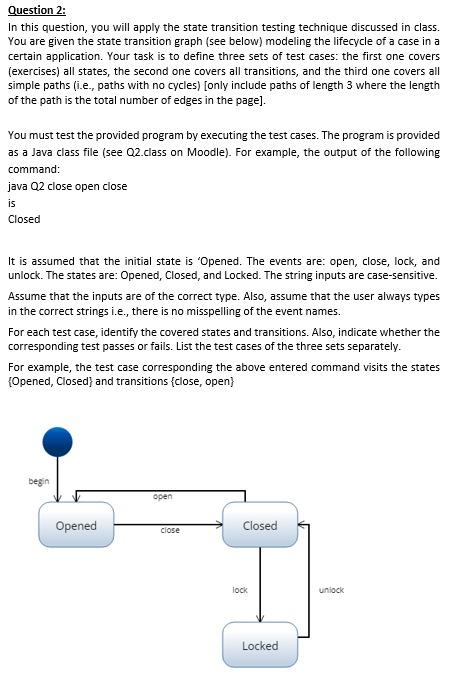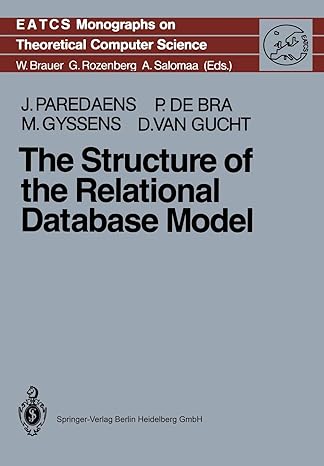
Question 2: In this question, you will apply the state transition testing technique discussed in class. You are given the state transition graph (see below) modeling the lifecycle of a case in a certain application. Your task is to define three sets of test cases: the first one covers (exercises) all states, the second one covers all transitions, and the third one covers all simple paths (i.e., paths with no cycles) [only include paths of length 3 where the length of the path is the total number of edges in the page). You must test the provided program by executing the test cases. The program is provided as a Java class file (see 02.class on Moodle). For example, the output of the following command: java Q2 close open close is Closed It is assumed that the initial state is 'Opened. The events are: open, close, lock, and unlock. The states are: Opened, Closed, and Locked. The string inputs are case-sensitive. Assume that the inputs are of the correct type. Also, assume that the user always types in the correct strings i.e., there is no misspelling of the event names. For each test case, identify the covered states and transitions. Also, indicate whether the corresponding test passes or fails. List the test cases of the three sets separately. For example, the test case corresponding the above entered command visits the states {Opened, Closed; and transitions (close, open} begin open Opened Closed close lock unock Locked Question 2: In this question, you will apply the state transition testing technique discussed in class. You are given the state transition graph (see below) modeling the lifecycle of a case in a certain application. Your task is to define three sets of test cases: the first one covers (exercises) all states, the second one covers all transitions, and the third one covers all simple paths (i.e., paths with no cycles) [only include paths of length 3 where the length of the path is the total number of edges in the page). You must test the provided program by executing the test cases. The program is provided as a Java class file (see 02.class on Moodle). For example, the output of the following command: java Q2 close open close is Closed It is assumed that the initial state is 'Opened. The events are: open, close, lock, and unlock. The states are: Opened, Closed, and Locked. The string inputs are case-sensitive. Assume that the inputs are of the correct type. Also, assume that the user always types in the correct strings i.e., there is no misspelling of the event names. For each test case, identify the covered states and transitions. Also, indicate whether the corresponding test passes or fails. List the test cases of the three sets separately. For example, the test case corresponding the above entered command visits the states {Opened, Closed; and transitions (close, open} begin open Opened Closed close lock unock Locked







